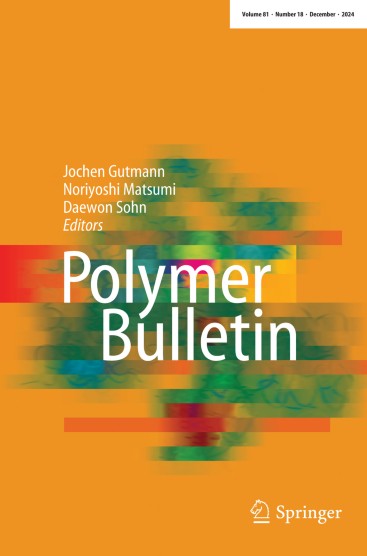Self-healing amine- and carboxy-cured bio-based epoxy vitrimers driven by the disulfide metathesis reaction
Abstract
Mixtures of sorbitol polyglycidyl ether (SPE) and poly(ethylene glycol) diglycidyl ether (PEGDGE) were cured with cystamine (CTA) to produce bio-based amine-cured epoxy resins (SPE-PEGDGE-CTA) containing disulfide bonds. Furthermore, the SPE was cured with 3,3′-dithiodipropionic acid (DTDPA) and citric acid (CA) to produce bio-based carboxy-cured epoxy resins (SPE-DTDPA-CA) containing disulfide bonds. Fourier transform infrared spectroscopy (FT-IR) of the cured products revealed that the epoxy–amine and epoxy–carboxy curing reactions proceeded almost completely. The glass transition temperature (Tg) and mechanical strength of the amine-cured products decreased with increasing PEGDGE fraction, and those of the carboxy-cured products decreased with increasing DTDPA fraction. The amine-cured product with the highest CTA fraction and all carboxy-cured products were healed three times at 80 ℃, whereas none of the corresponding cured products without disulfide bonds exhibited self-healing properties. The maximal healing efficiencies of the amine- and carboxy-cured products in terms of tensile strength were 84% and 91%, respectively.


 求助内容:
求助内容: 应助结果提醒方式:
应助结果提醒方式:


